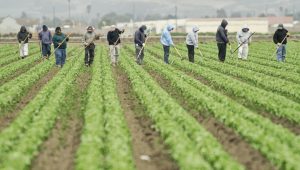
Although necessary for the economic (and possibly mental) health of most people, working is more-or-less bad for your physical health. This two-part blog explores the most unhealthful jobs. Jobs can be unhealthful in two basic ways: acute incidents and chronic conditions. In Part 1, I’m focused on acute incidents that take workers’ lives. Next time, I’ll explore chronic work conditions that injure people with repeated exposure, over time.
Writers Note 1: All of these jobs provide opportunities for murders that look like accidents–and when occupational deaths are so common, sliding in a murder would be more likely to be missed.
Killer Jobs

The rate of fatal work-related injuries overall is 3.5 per 100,000 workers. More than any other big category, transportation-related accidents killed workers (more than 2,000 of 5,250 deaths, 40%). The second-most common workplace fatalities was contact with objects and equipment, 13%. These numbers come from cnbc.com, 12/27/2019.

Although exact rankings vary somewhat from year to year, there seems to be consensus that the following jobs are the ones most likely to have workplace fatalities, based on data from the U.S. Bureau of Labor Statistics. The parenthetical numbers are fatal injuries per 100,000 workers, giving you a comparison metric
According to ISHN, a publication for safety and health professionals, the two most frequently fatal jobs are deep sea fisherman and logger. All death rates below come from ishn.com/articles/110496-most-dangerous-jobs-in-the-us-the-top-20

Loggers (109.3) most often die because of logging equipment or logs. In addition, they work outside, in isolated areas, exposed to dangerous weather conditions.

Deep Sea Fishermen (74.2) as well as other sailors (55.1) most often die by drowning. They also face risks from icy decks, working with heavy equipment, being sick or injured too far from land to get medical treatment in time. ISHN: “And to top it all off, this [deep sea fishing] is about the only profession where you can be swallowed whole.”


Aircraft Pilots and Flight Engineers (50.4) most often die in transportation “incidents.” The majority of fatalities result from crashes of privately owned planes. About 20% of fatal U.S. crashes happen in Alaska, where 82% of the towns and settlements can only be reached by plane.

Paving, Surfacing, and Tamping Equipment Operators (46.7) most often die from getting hit by construction equipment or crashes involving other motor vehicles.

Dredging, Excavating, and Loading Machine Operators (42.4) die by contact with objects and equipment. Unstable dredging equipment can sink.


Roofers (39.0) die in ways you might expect: most often falling off the roof, but also slipping and tripping: 34% of falls from roofs are fatal.

Machine Maintenance (37.4), Woodworking Machine Setters, Operators, and Tenders (35.9) are most likely to die from contact with equipment.

Septic Tank Servicers and Sewer Pipe Cleaners (34.3) die from contact with objects and equipment.

Refuse and Recyclables Collectors (31.9) are most likely to die after being hit by the truck or another vehicle. Garbage collectors’ mortality rate is 100 times higher than is considered acceptable risk. By comparison, police offers suffer 15.8 deaths per 100,000.

Structural Iron and Steel Workers (28.0), like roofers, are most likely to die from falls, slips, and trips.


Delivery and Other Truck Drivers (26.0) die most often in traffic crashes. Long-haul trucking accounts for about one out of every four fatal work accidents. Although other jobs have higher fatality rates, truckers have the largest number of deaths on the job.


Farmers, Ranchers, and Other Agricultural Managers (25.6) die most often in crashes, including tractor crashes. However, there are also falls from roofs or multi-story barn lofts, trampling by farm animals, and suffocation in grain silos.

Children (16 and younger) working on farms die more often than all other industries combined. “Farmers are nearly twice as likely to die on the job as police officers, five times as likely as firefighters, and 73 times more often that Wall Street bankers.” (INSH.world)


Taxi Driving is the lowest-paying career on these lists of the most dangerous jobs, with an average annual income of $23,500 in the US. Taxi drivers are twice as likely as police officers to be a victim of homicide while working, and 20 times more likely to be murdered while working than the average American. Compared to other workers, they have an increased risk of such deaths because they work with cash, with the public, alone and during nighttime hours. Black and Hispanic drivers are more likely than white drivers to die on the job, and male drivers are six times more at risk than female drivers.
Writers Note 2: These rankings apply primarily to jobs in the US. Differences in labor laws, environmental conditions, and record-keeping around the world means that characters in other countries have an even wider range of ways to die at work!

- Stunt work – doing dangerous activities on purpose for pay
- Tourist attractions, street theater
- Doubles for actors in dangerous roles
- Stage magicians, escape artists, circus performers, etc.
- Shipbreaking – stripping retired ships for reusable materials
- Open welding torches around explosive gasses
- Sheets of metal falling without warning
- Falling from multi-story heights

- Sherpa – guiding hikers up mountain trails
- Carrying incredibly heavy packs
- Falling off mountains
- Avalanches
- Mining – many countries have far less stringent safety protocols
- Tunnel collapses
- Toxic fumes with little or no ventilation
- Heavy, sharp, dangerous
Bottom Line for Writers: deaths, whether accidental or intentional, are great plot points, tension builders, and revealers of character.

